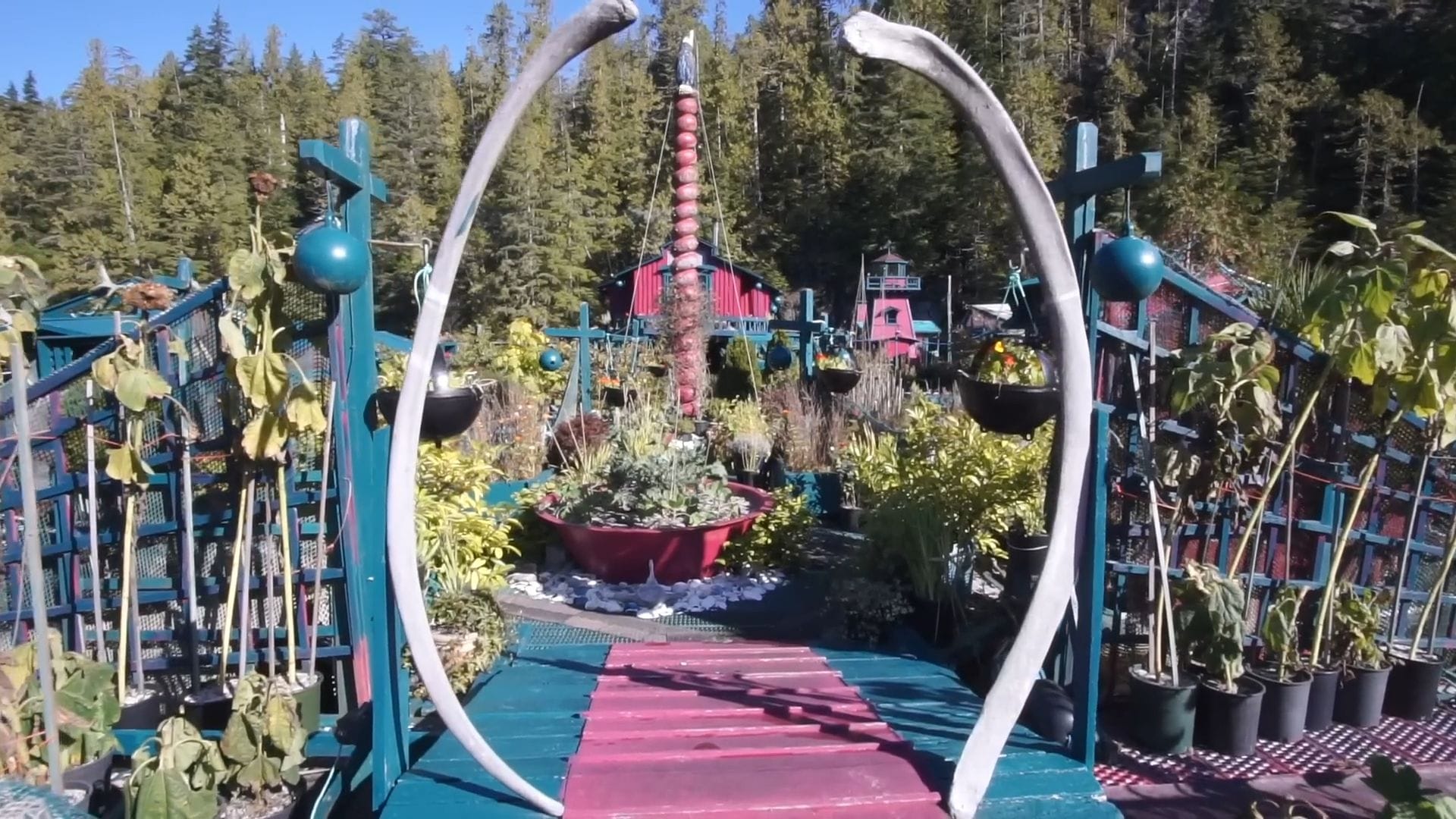This Man Built His Own Island Out Of Trash
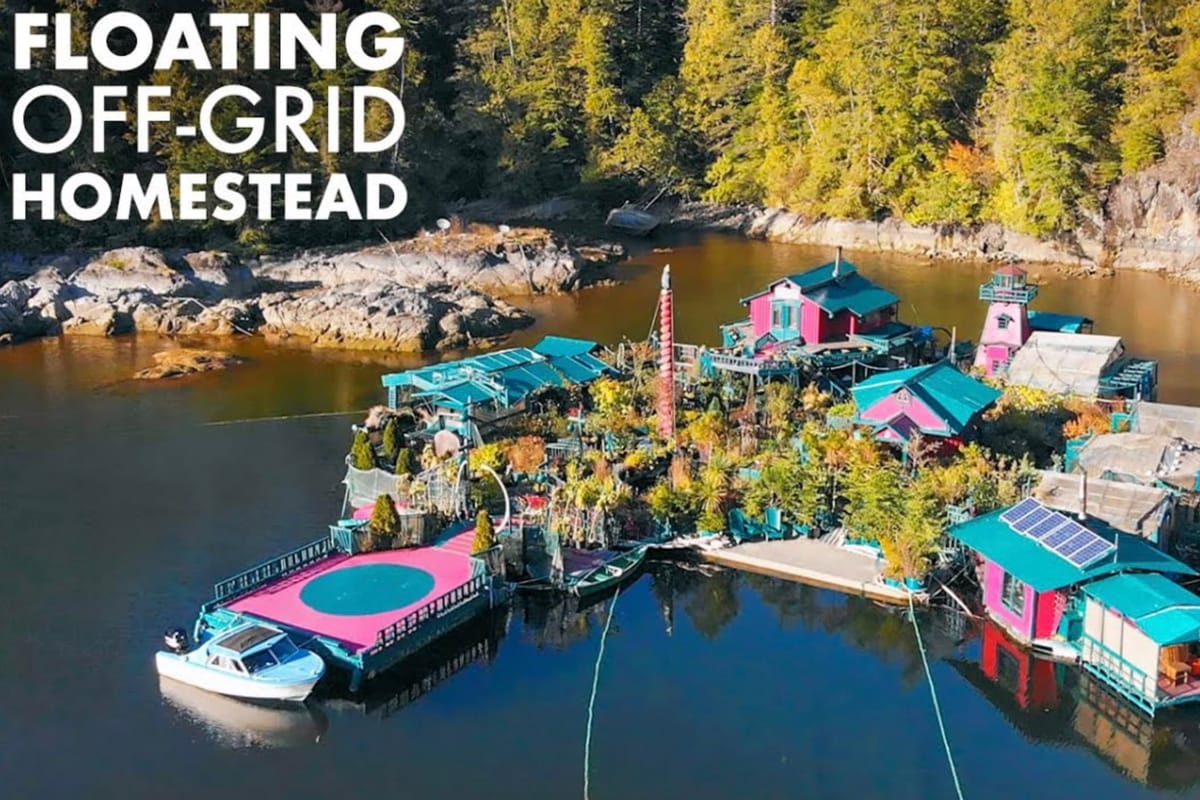
Welcome to one of the most extraordinary homes you’ll ever experience – a completely self-built floating island that defies every convention of traditional living.
Like birds that build nests without permission, the owners of this remarkable homestead used whatever materials they could find around them, with sixty percent of everything here acquired through trade and barter using their skills as artists and carvers.
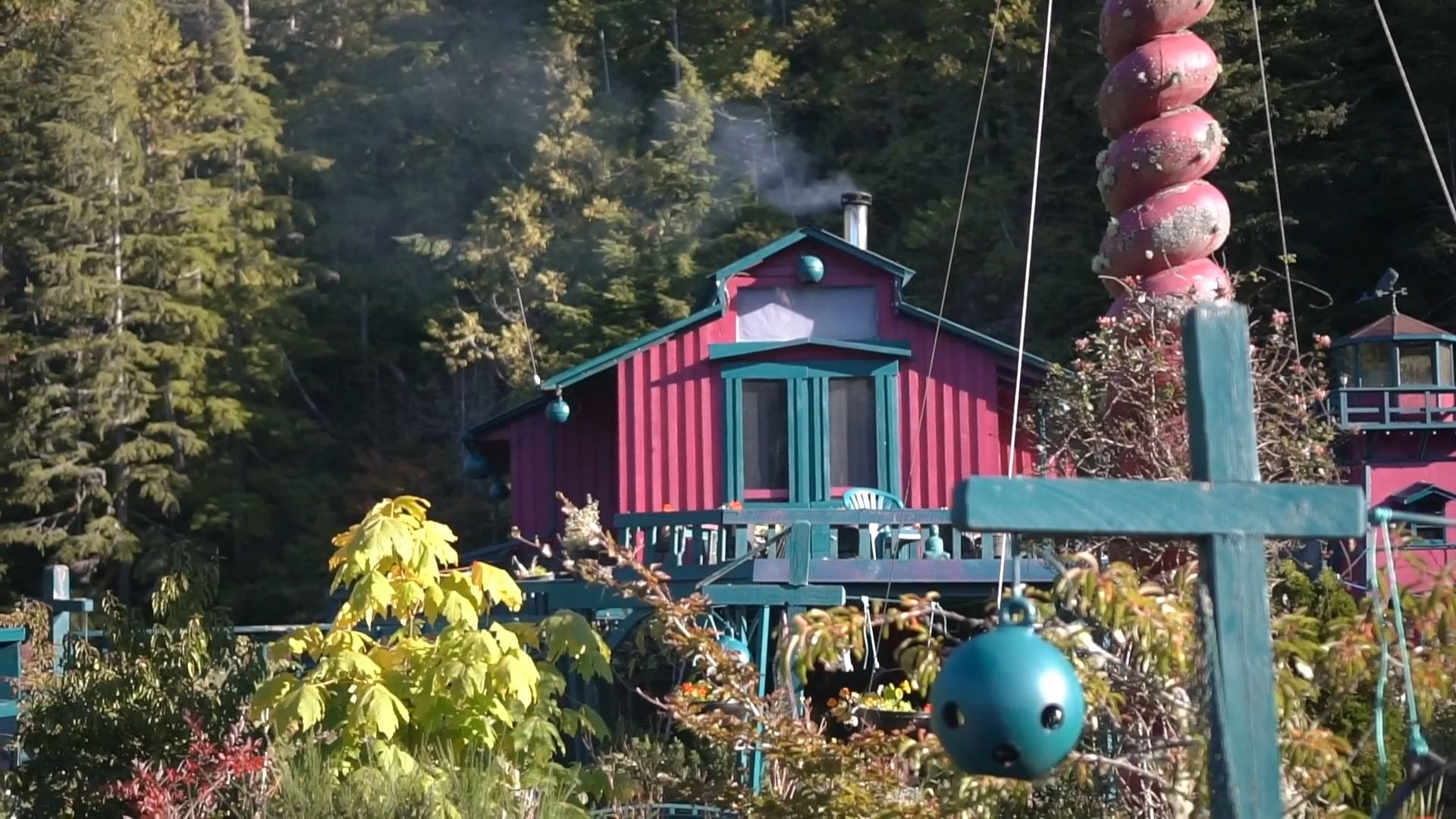
The dream was simple yet profound – to live as self-sufficiently as possible, growing their own food and existing in harmony with nature’s rhythms. This incredible project began as a partnership between two people who shared the same vision of living off the land and exploring remote areas.
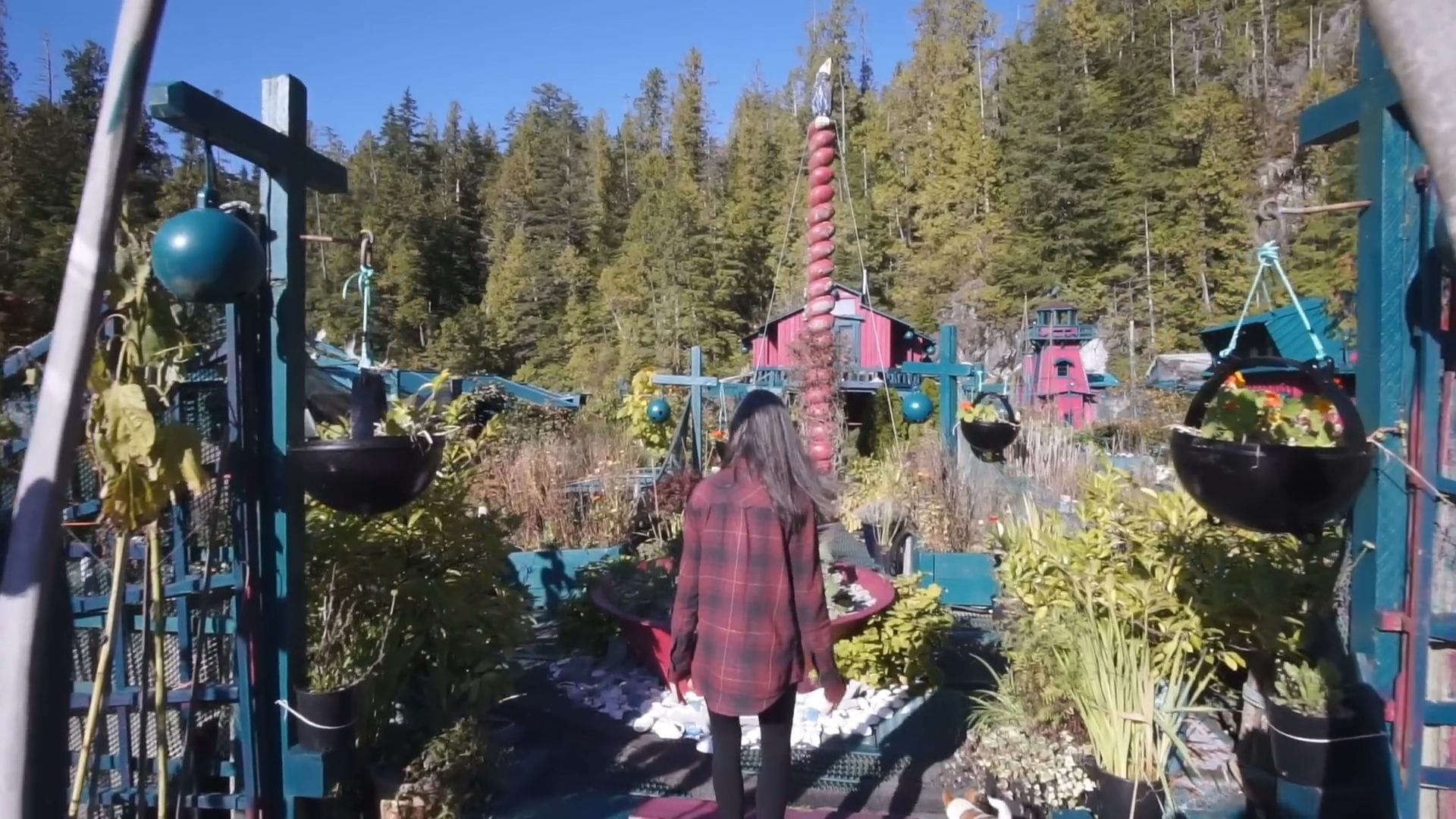
After staying in a friend’s cabin nearby, a powerful storm blew in the very wood that would become the foundation of their floating home. They built the initial structure on shore, and in 1992, this amazing floating homestead found its permanent home in this protected cove.
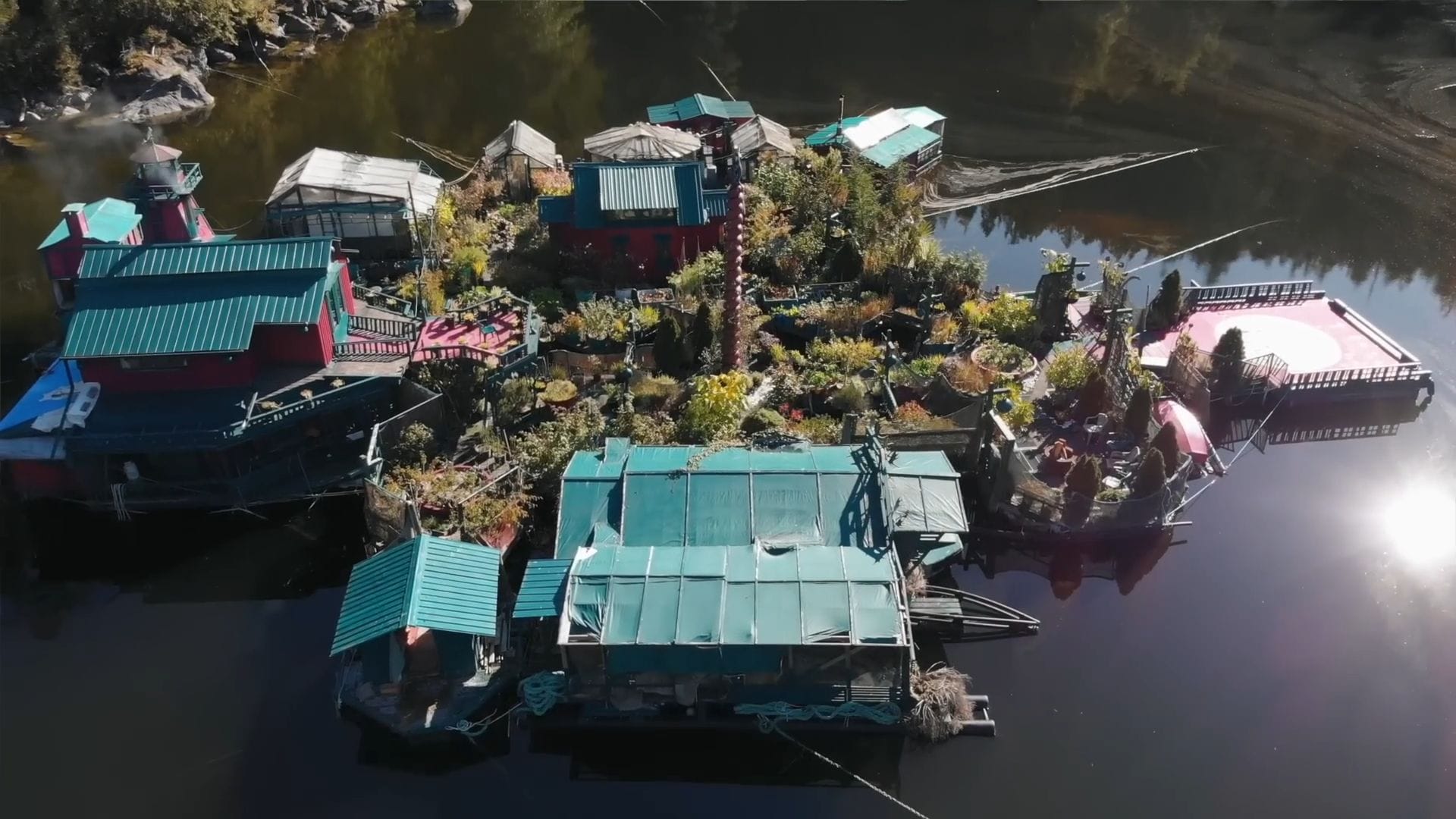
Step aboard what started as a modest half-sized house, built with the urgent priority of having a roof over their heads. Because one of the owners is a dancer, the very next addition was a dedicated dance floor – an essential space for movement and expression on the water.
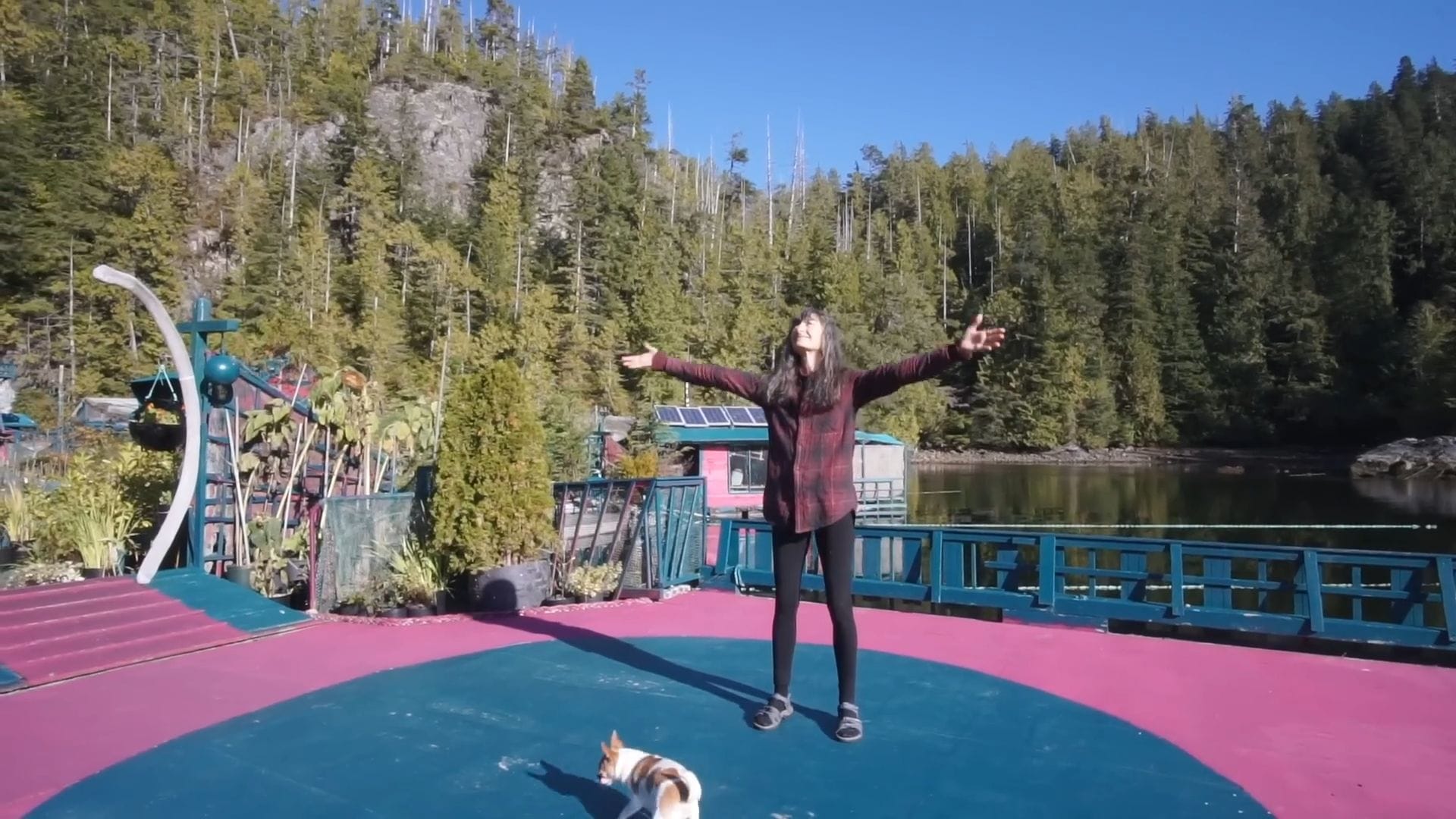
The garden began modestly with a single float dedicated to growing salads, but as their ambitions grew, so did their floating agricultural empire. Each new desire to grow different crops resulted in another float being added, creating an ever-expanding network of cultivation spaces.
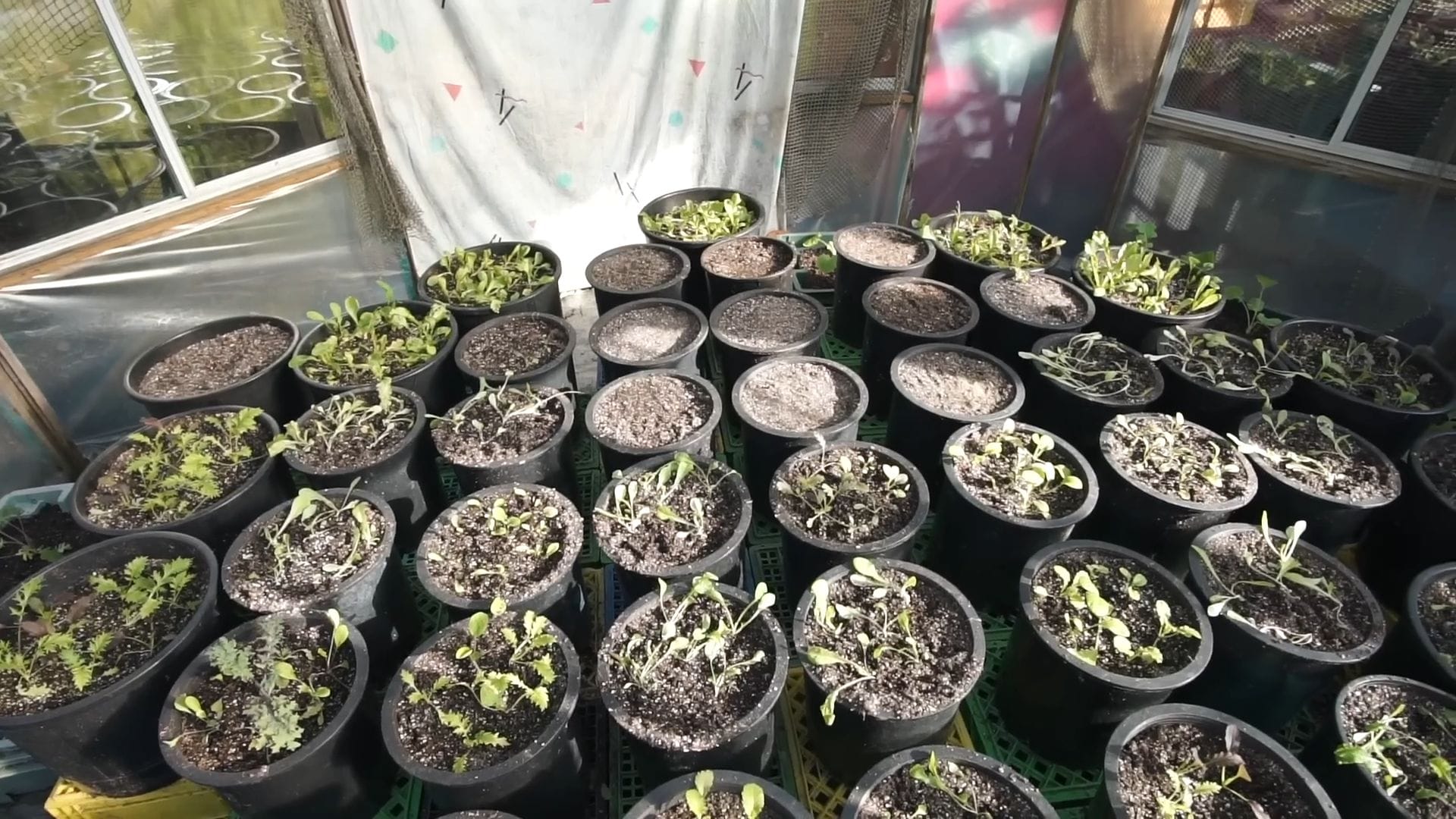
Four impressive greenhouses dot the floating landscape, each serving a crucial purpose in this water-based growing system. The unique challenge of gardening on water means dealing with coolness rising from below and fierce winds from above, making these protective structures absolutely essential.
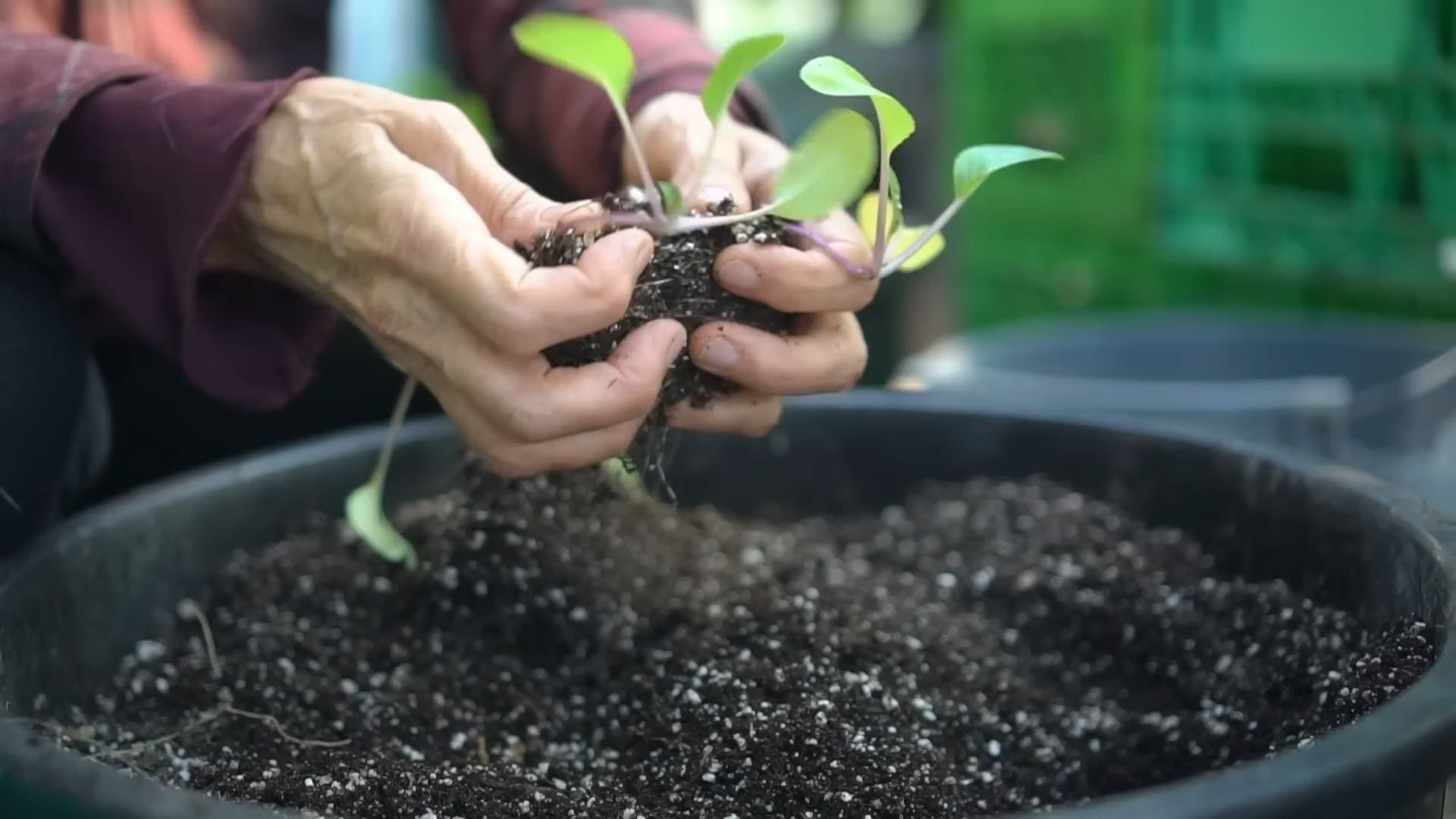
Tender plants like tomatoes and peppers require the extra warmth these greenhouses provide, and now the owners can grow virtually everything they desire. The gallery building represents another dream realized – a dedicated space to display their artwork without paying the hefty percentages that traditional galleries demand.
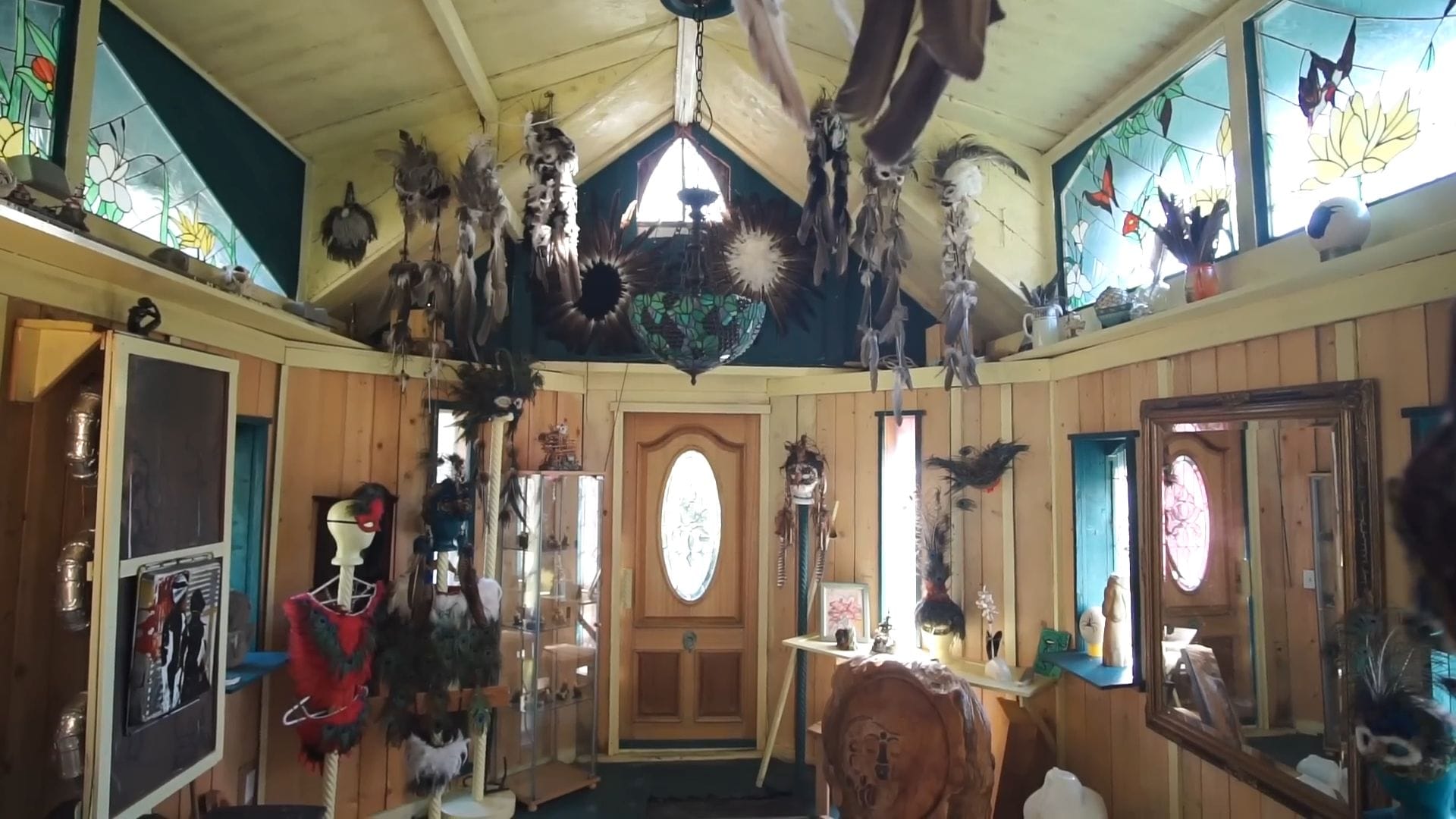
Walk over to the peaceful beach area, which was specifically designed as an end-of-day retreat where the couple can sit and relax after their work is done. The addition of a fire pit creates wonderful ambiance, especially when family and friends gather around the campfire in the evenings.
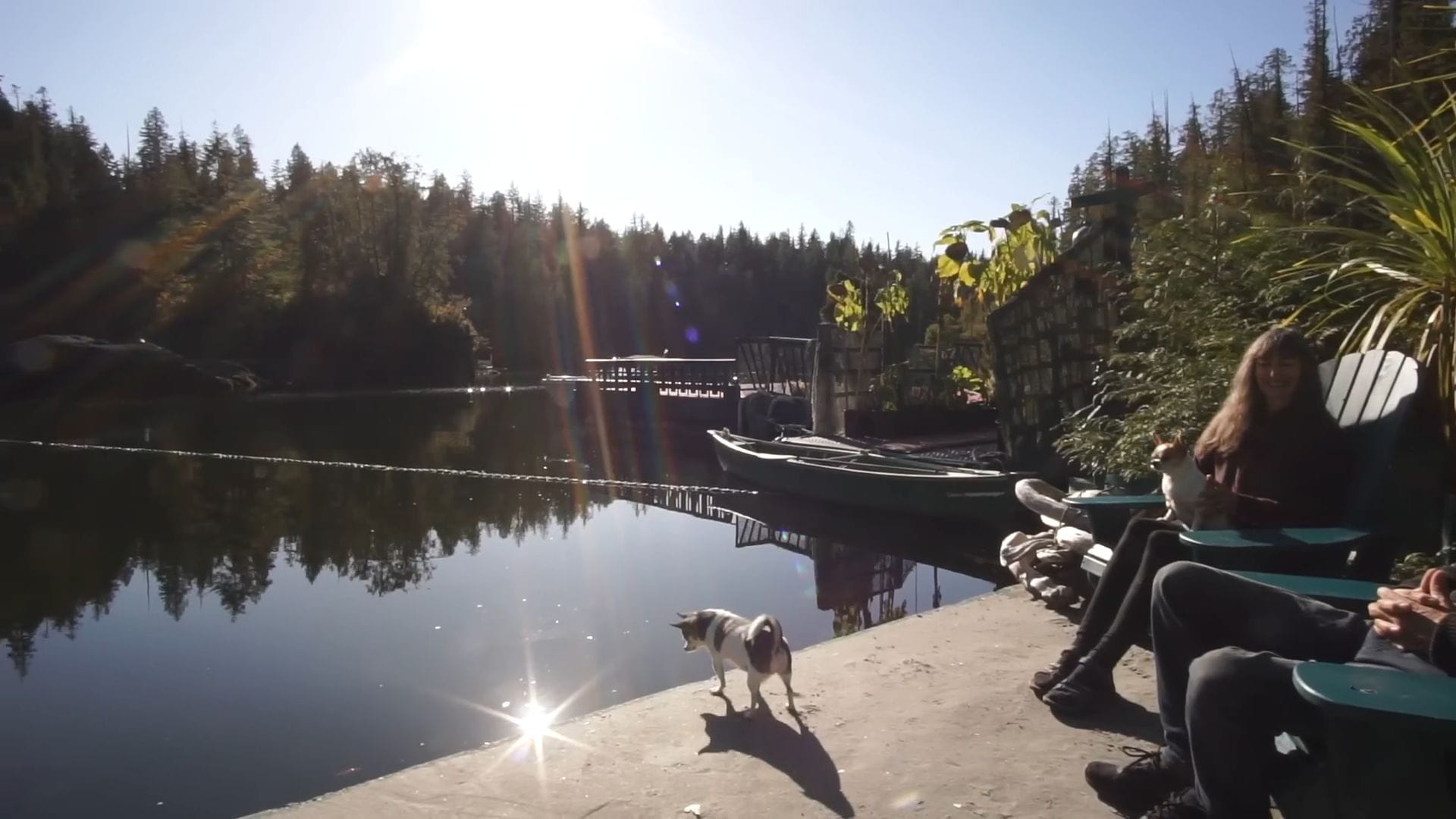
Two floating boat houses serve a practical purpose that’s essential on the rain-soaked west coast – eliminating the constant need to bail out boats while protecting the motors from harsh weather. The charming lighthouse building features an actual functioning light at the top and includes an extra shower for visiting family and friends.
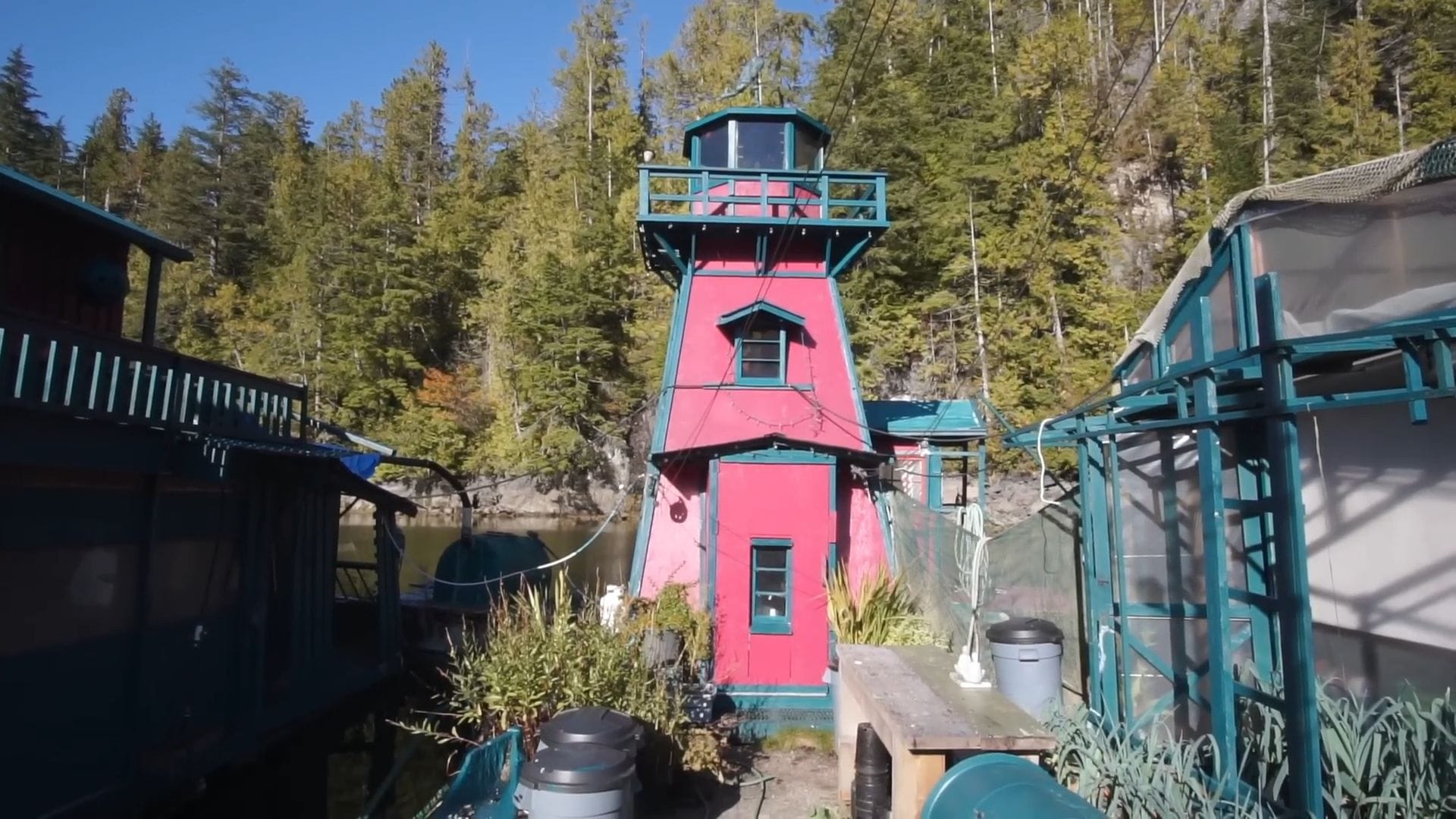
The main house contains a bathtub and shower that Wayne crafted by hand, along with their dedicated candle factory building where they continue their artisan craft. This entire floating paradise weighs an astounding two million pounds, representing ten years of careful material accumulation and engineering.
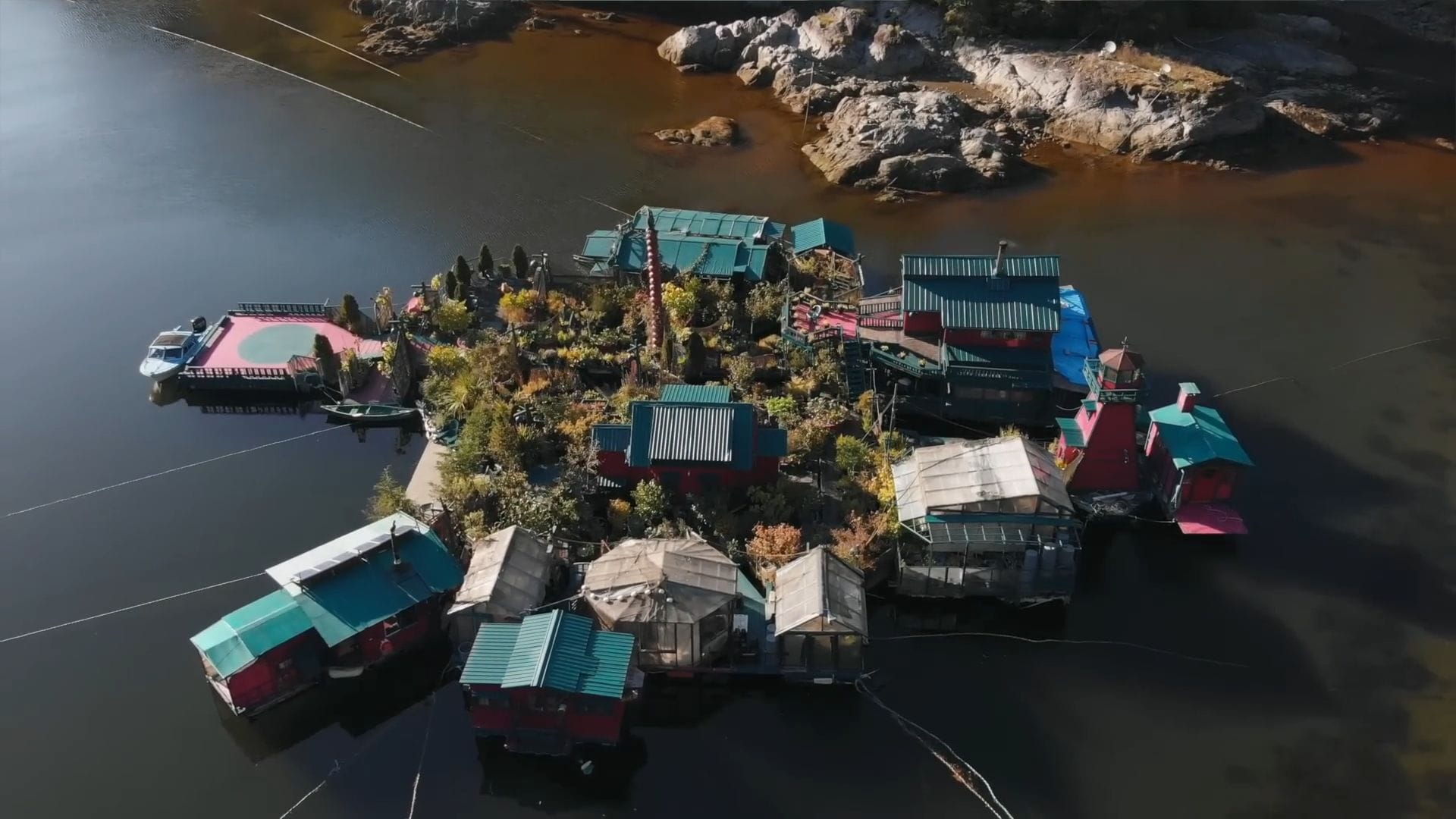
The foundation of this floating dream rests entirely on recycled fish farm materials, though this wasn’t always the case. For many years, they relied on wood structures that required constant replacement due to rot, until an opportunity arose to acquire discarded fish farm equipment.
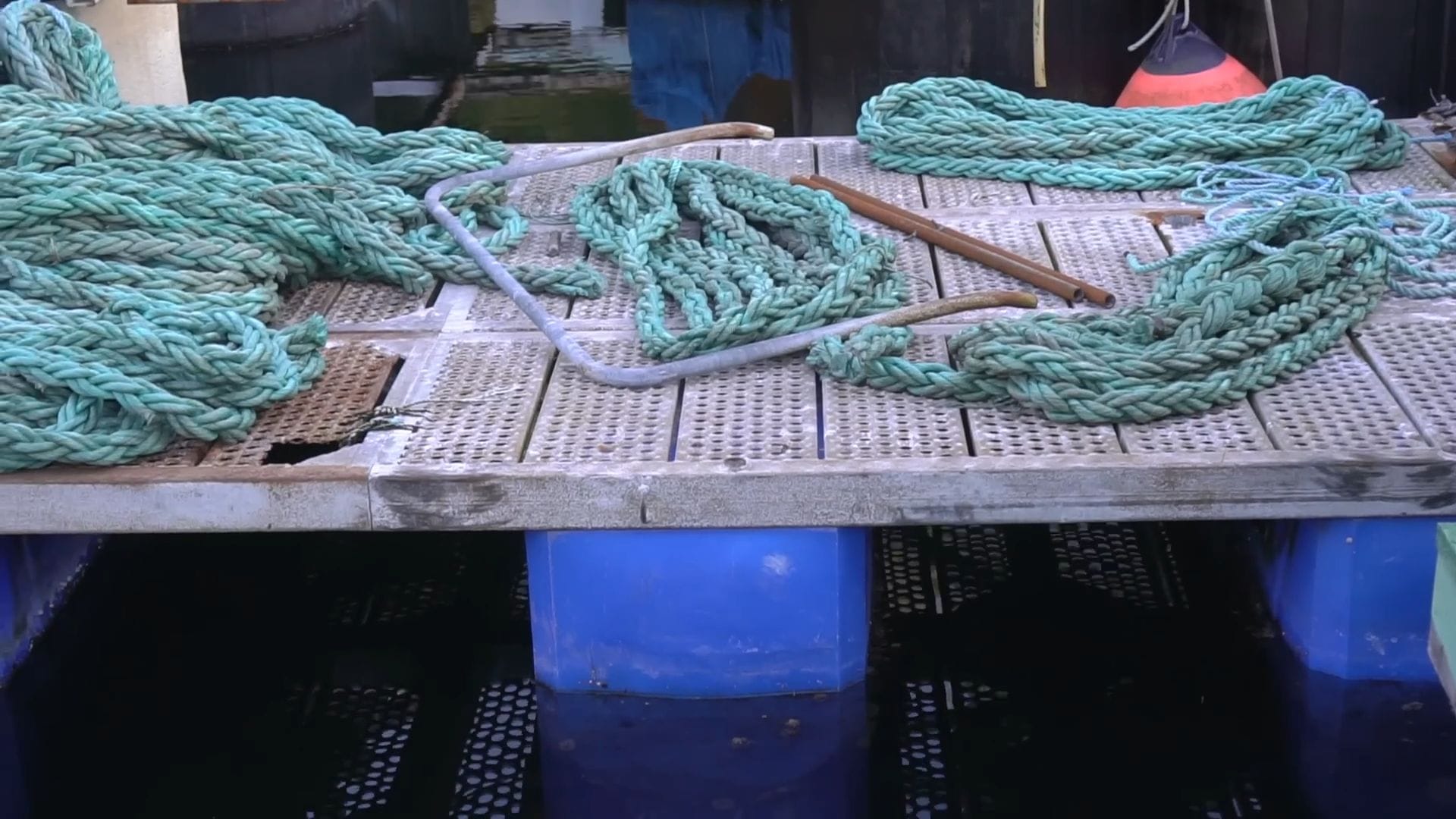
This upgrade to armored styrofoam and metal-based systems provided incredible security and durability that lasts indefinitely. Wayne’s ingenious anchoring system uses thick ropes in a spiderweb formation, allowing the entire complex to move as one unit during storms rather than having buildings bump destructively against each other.
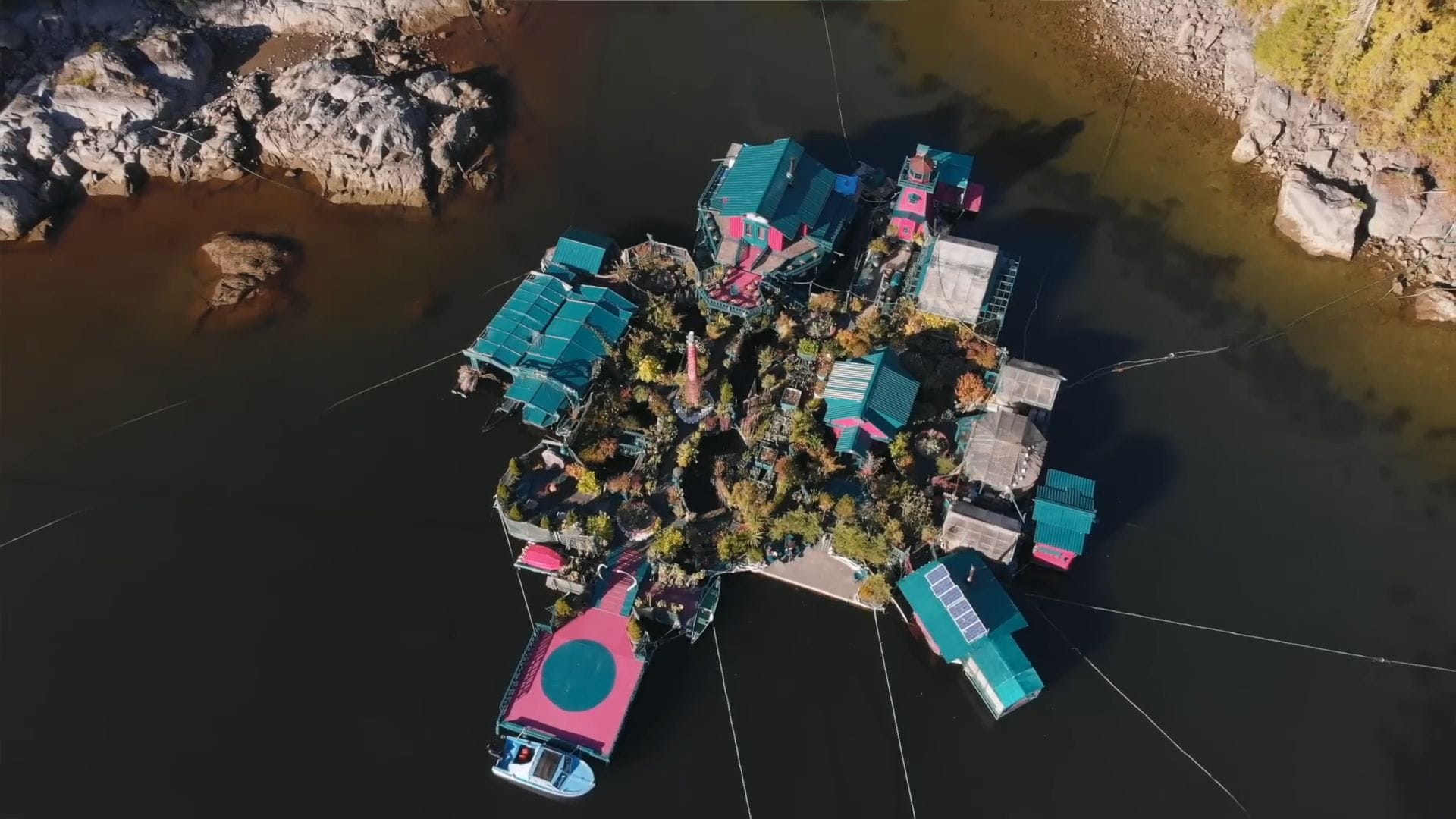
The water system showcases brilliant simplicity – a lake positioned above the homestead provides gravity-fed water through a four-inch pipe, eliminating the need for pumps or electricity. They’ve recently been gifted a cutting-edge Go Green wastewater system that will completely purify everything through microbial action.
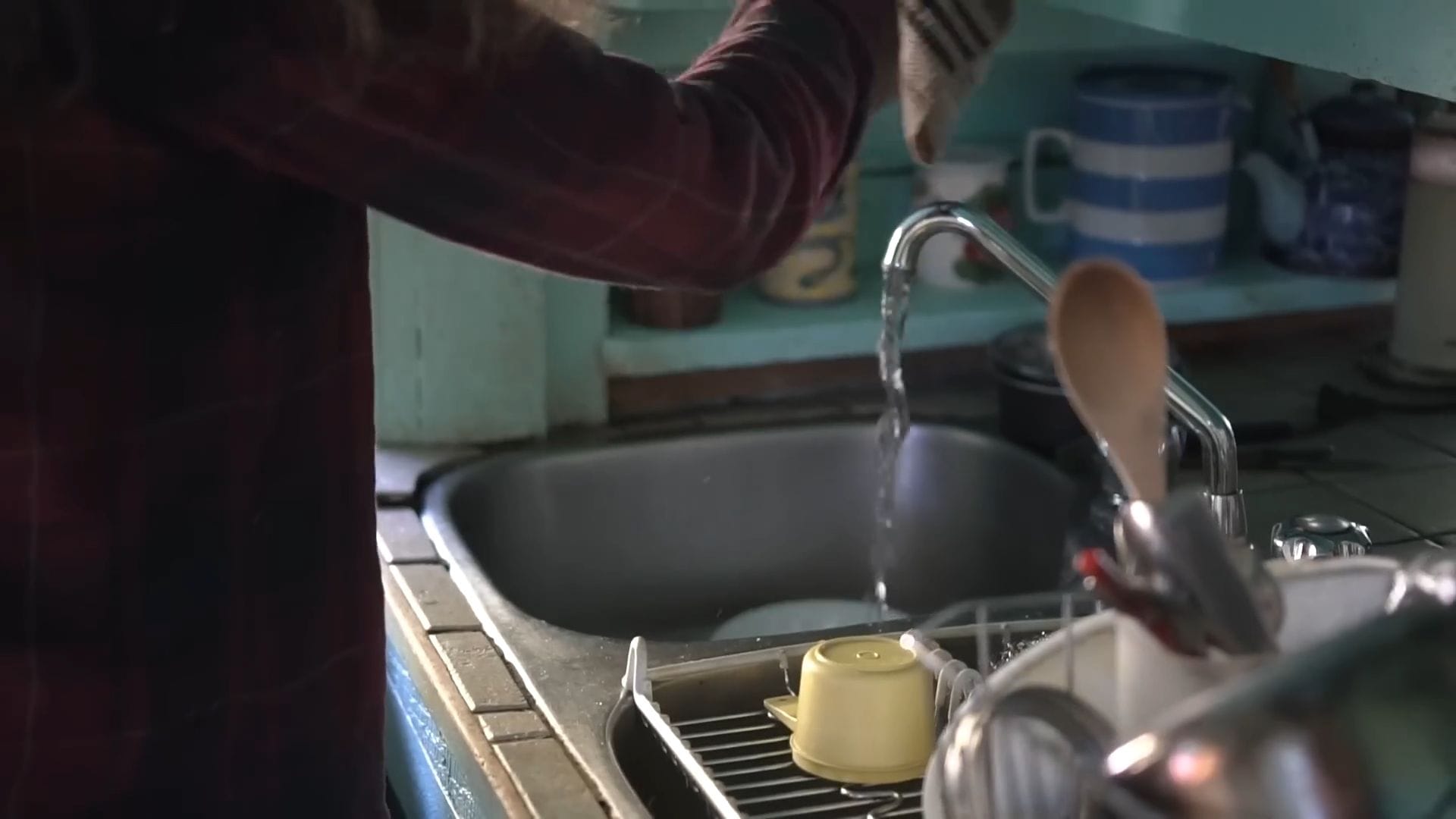
The old system required a tank where waste was processed and then emptied in deep water, but this new technology will transform and purify everything on-site. Their waste management philosophy extends to composting organic materials and burning what can be safely burned, minimizing trips to town for recycling.
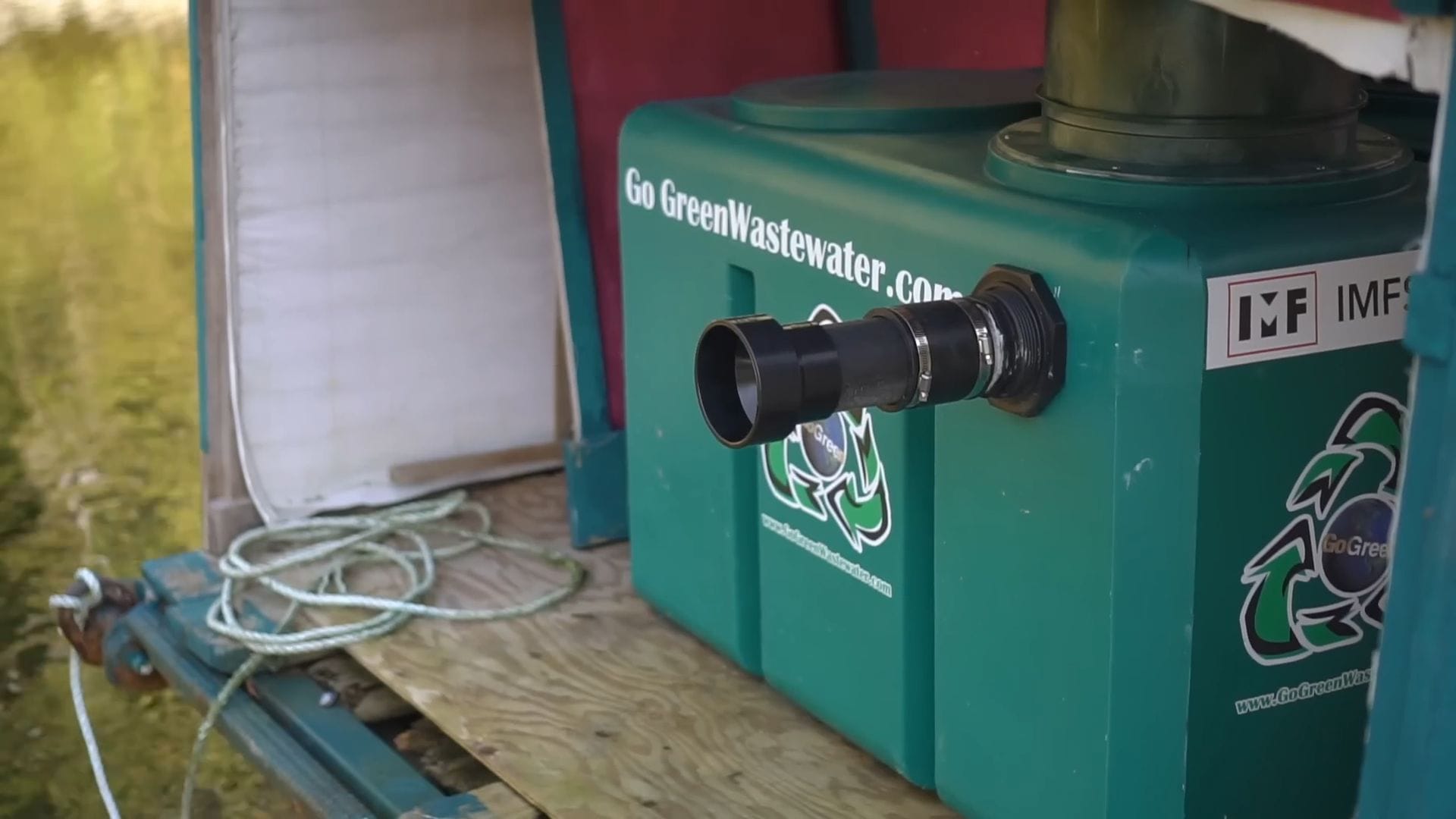
Power comes from a dual system combining 25-year-old solar panels with backup generators, acknowledging that all energy sources are intermittent and require backup systems. The solar setup only works when sun hits it directly, unlike newer systems that function even under cloudy skies.
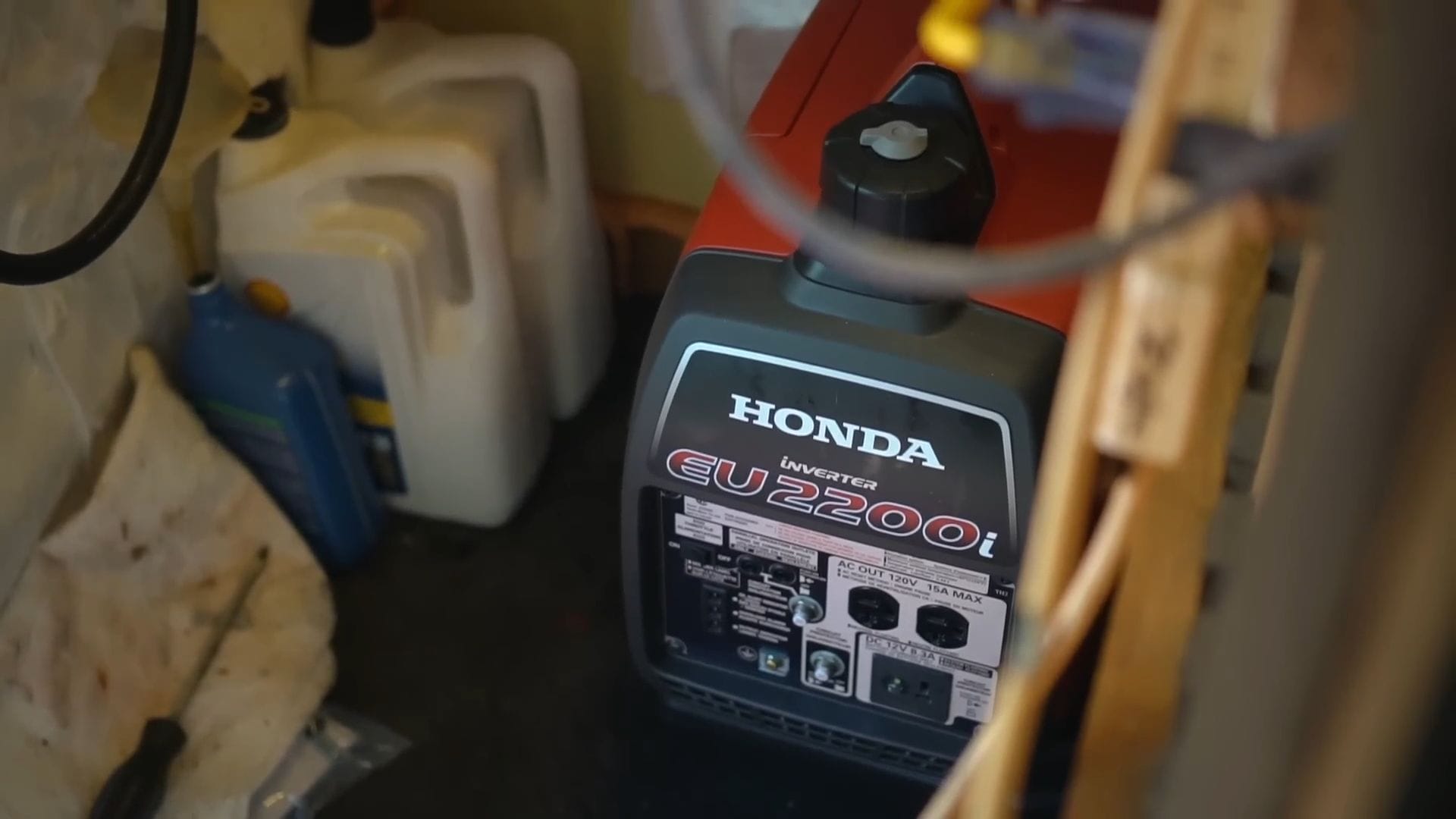
Heat comes entirely from firewood gathered from beaches after being pushed out of rivers – never requiring them to cut living forest trees. The house features single-wall construction with one-inch insulation that allows the building to breathe, preventing the mold and mildew problems that plague sealed structures in this wet climate.
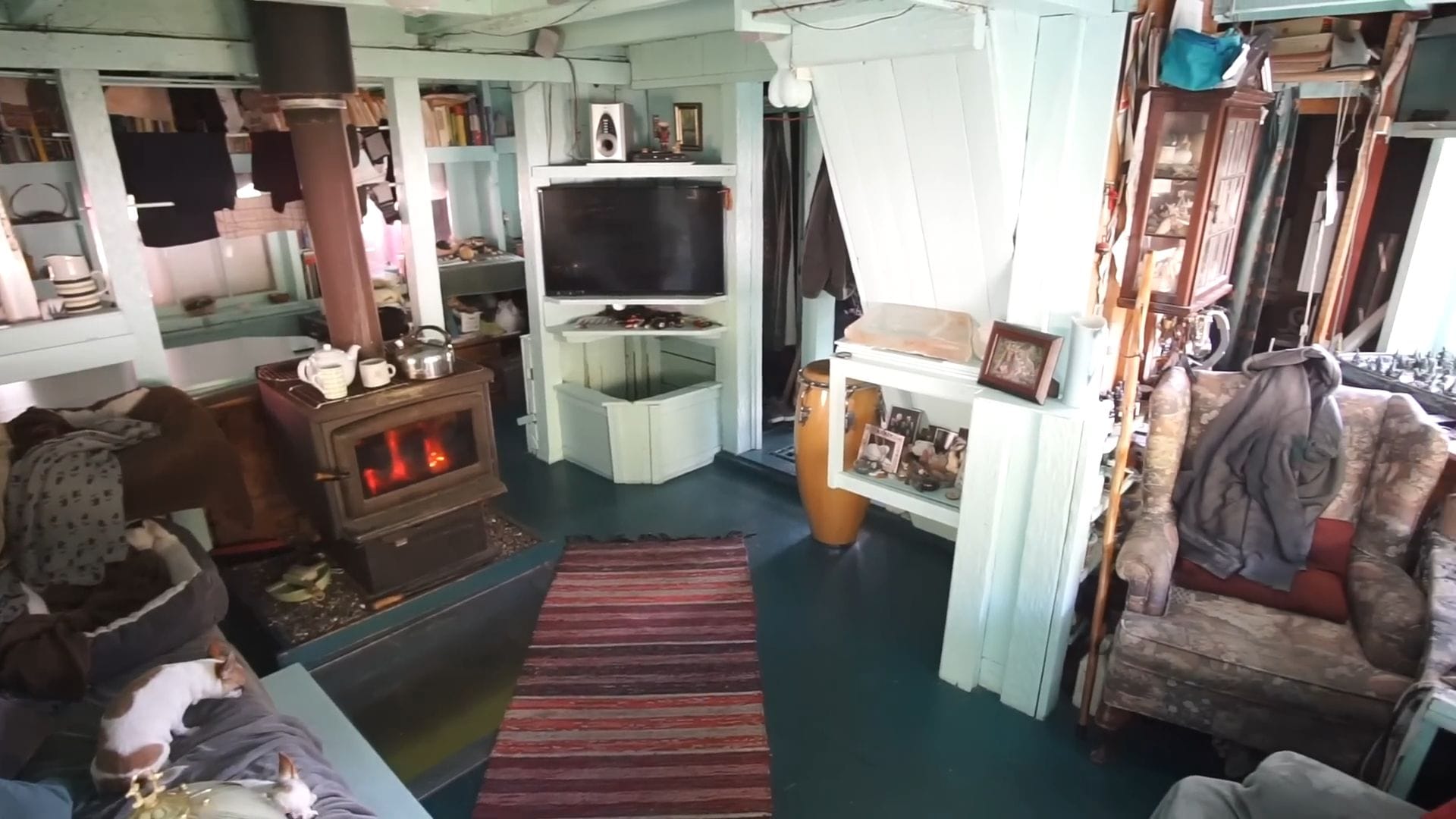
The food system combines fishing with extensive vegetable gardening, with one owner catching fish, crab, and prawns while the other grows protein-rich crops like fava beans, peas, corn, quinoa, and black beans. This complementary approach to nutrition means they could survive completely independently if necessary.
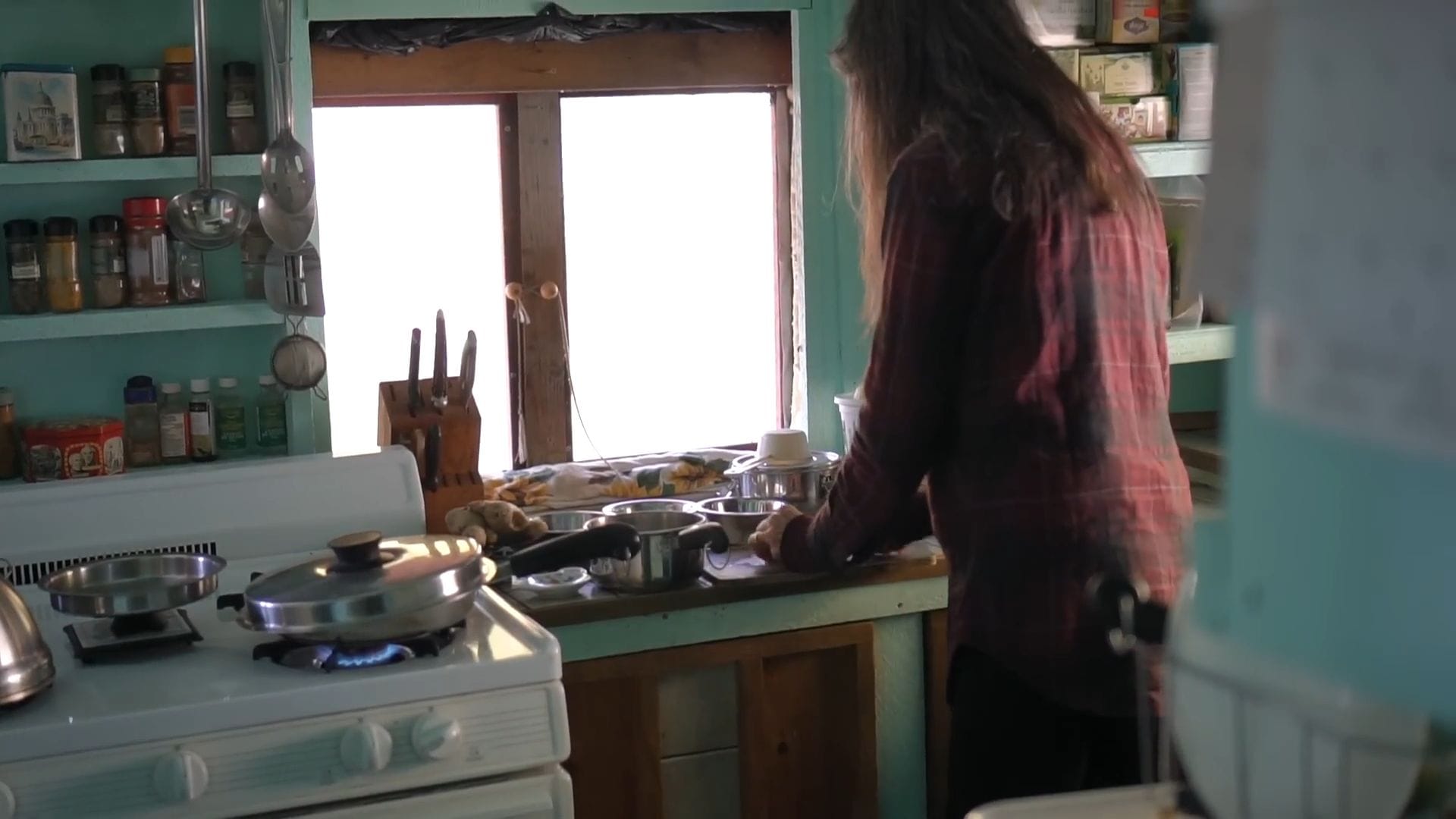
Money has never driven their decisions, and they’ve weathered many times when they were down to their last twenty cents. Their approach during financial challenges is beautifully simple – create art, carve something beautiful, and take it to town to sell, trusting that their creativity will provide what they need.
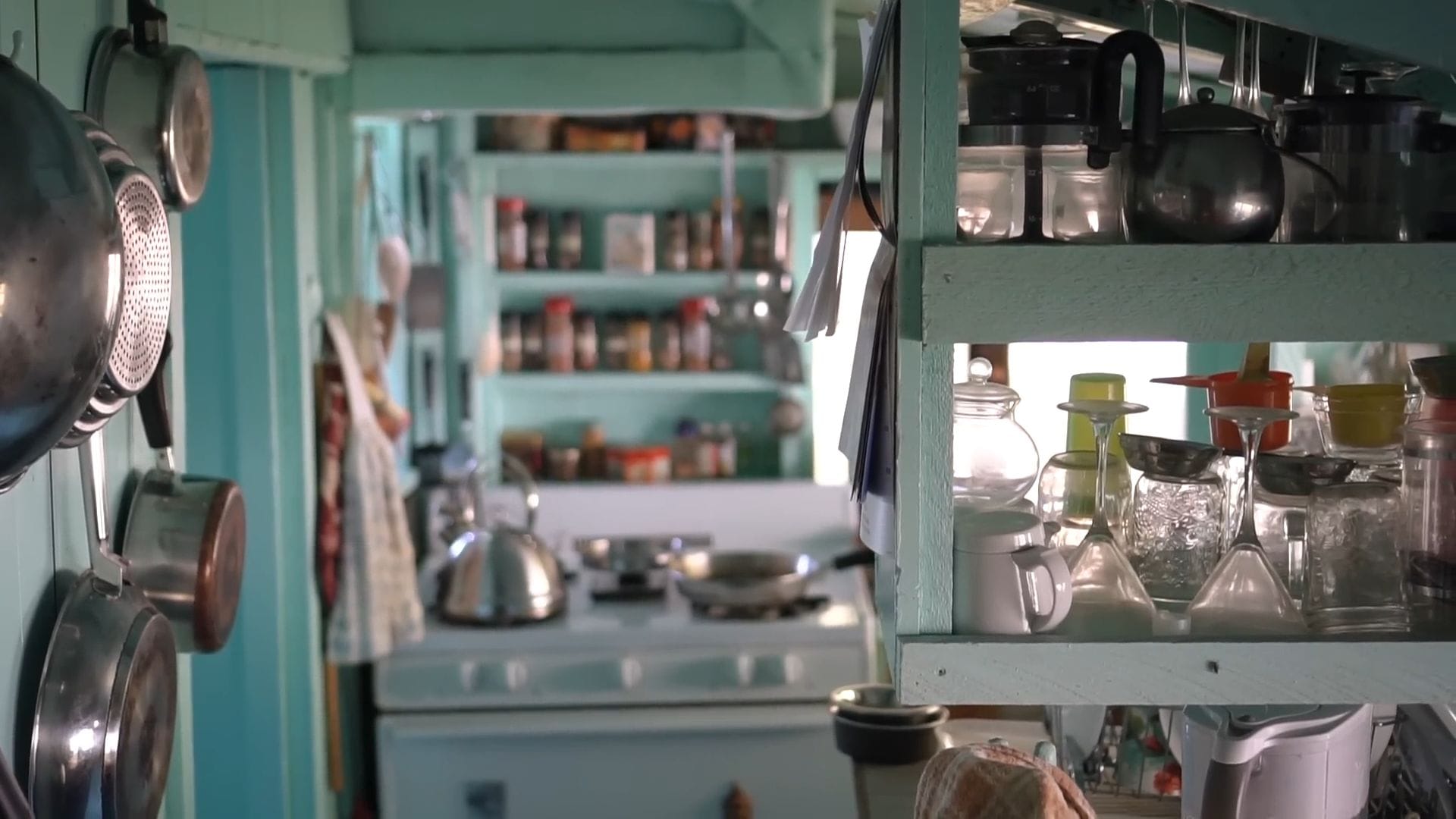
This lifestyle requires acknowledging that it’s genuinely hard work that demands constant attention and effort. Yet the rewards are immeasurable – waking each morning surrounded by water, incredible forests, and abundant wildlife, living to the rhythms of moon and tide rather than corporate schedules.
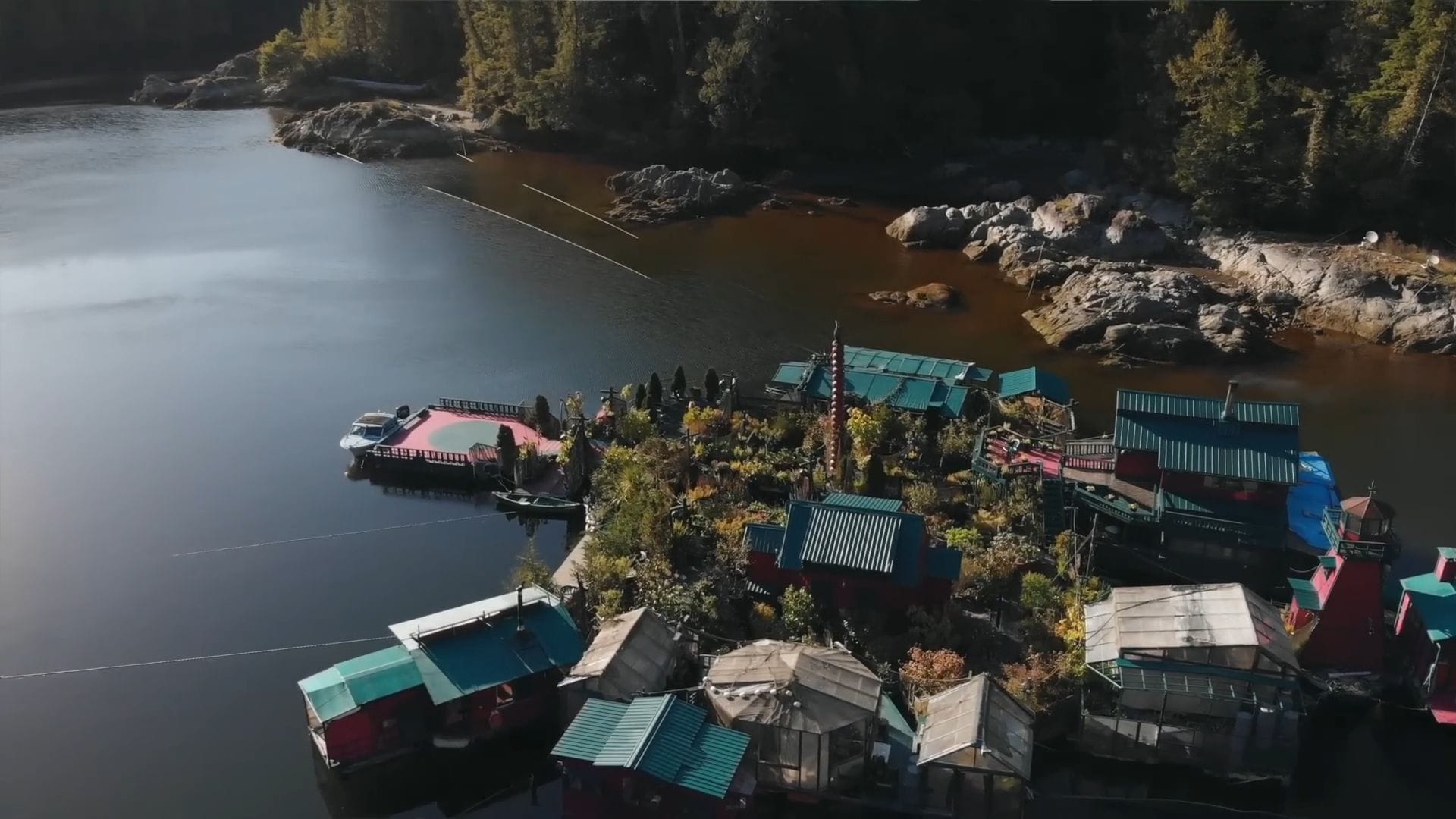
Their dream is to live here until the end of their days, though they recognize that the current house will eventually need rebuilding after lasting an impressive 27 years. When that time comes, they’ll use the modern fish farm flotation technology to create a structure with an even longer lifespan, ensuring this floating paradise continues far into the future.
